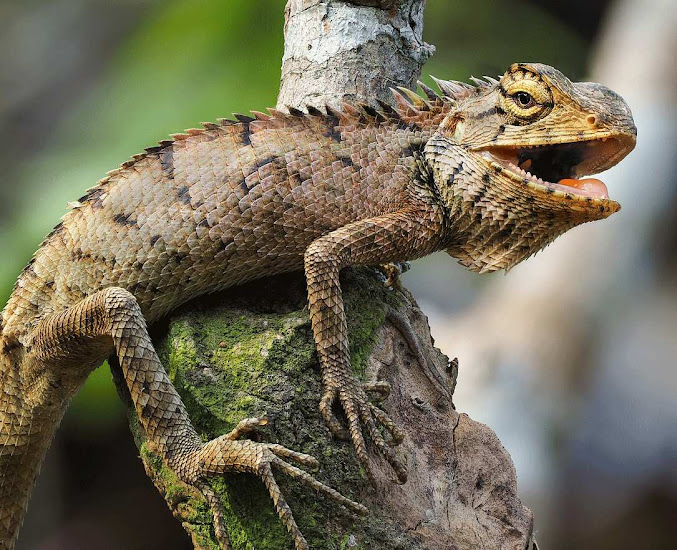Parrots
Parrots ANIMALS KINGDOM
parrot, a term applied to a huge gathering of bombastic, unruly birds of the family Psittacidae. Parrot likewise is utilized regarding any individual from a bigger bird bunch, request Psittaciformes, which incorporates cockatoos (family Cacatuidae) too. Parrots have been kept as enclosure birds since antiquated times, and they have forever been famous in light of the fact that they are entertaining, shrewd, and frequently friendly. A few are incredibly imitative of many sounds, including human discourse.
Budgerigar (Melopsittacus undulatus), is a well-known parakeet.
blue-and-yellow macaw
blue-and-yellow macaw
The family Psittacidae numbers 333 species. The subfamily Psittacinae, the "valid" parrots, is by a long shot the biggest subfamily, with individuals found in warm districts around the world. These birds have an unpolished tongue and eat seeds, buds, and a few foods grown from the ground. Numerous individuals from the subfamily are referred to just as parrots, yet different subgroups have more unambiguous names like macaw, parakeet, conure, and lovebird.
The African dark parrot (Psittacus erithacus) is fantastic as a talker; the male can unequivocally repeat human discourse. Hostage birds are ready and, contrasted and different parrots, generally agreeable. Some are said to have lived 80 years. The bird is around 33 cm (13 inches) long and is light dark with the exception of its squared, red tail and uncovered, whitish face; the genders resemble each other the same. Dark parrots are normal in the rainforest, where they eat products of the soil; they harm crops yet are significant propagators of the oil palm.
Among other capable impersonates are the Amazon parrots (Amazona). The 31 types of Amazons are thick birds, generally 25 to 40 cm (10 to 16 inches) long, with somewhat erectile crown feathers and a fairly short, squared tail. Their overwhelmingly green plumage is set apart with other splendid varieties, mainly on the upper head; the genders resemble the other the same. Amazon parrots live in tropical timberlands of the West Indies and Mexico to northern South America. They are hard to raise and might be forceful as well as squawky. Normal in aviaries is the blue-fronted Amazon (A. aestiva) of Brazil; it has a blue brow, a yellow or blue crown, a yellow face, and red shoulders. The yellow-delegated parrot (A. ochrocephala) of Mexico, Focal America, and from Ecuador to Brazil has some yellow on the head and neck, a red wing patch, and a yellow tail tip.
The priest, or green, parakeet (Myiopsitta monachus) is one of the hardiest parrot species. It is local to South America, yet some have gotten away from bondage in the US and are presently home in a few states. Its enormous stick home is exceptional among psittaciforms. Other exceptional parrots of this subfamily incorporate the hanging parrots (Loriculus), which rest topsy turvy like bats. Caiques (Pionites) are little, short-followed South American birds like conures in form and propensities.
For many years the night parrot, or night parakeet (Geopsittacus occidentalis), of Australia was believed to be terminated until a dead one was seen in 1990. It takes care of around evening time on spinifex grass seeds and snoozes under a tussock by day. Its home is a twig stage in shrubbery and is placed via a passage. Similarly uncommon is the ground parrot, or ground parakeet (Pezoporus wallicus). Uncommon nearby populaces exist in the badlands of seaside southern Australia and western Tasmania. It runs in the grass, flushes like a quail, and makes an unexpected misleading pitch, and it was previously pursued with canines. It eats seeds and bugs; its home is a leaf-lined misery under a hedge.
The lories (with short tails) and lorikeets (with longer, pointed tails) make up the Psittacidae subfamily Loriinae. The 53 species in 12 genera are tracked down in Australia, New Guinea, and a few Pacific islands. All have a thin, wavy-edged mouth and a brush-tipped tongue for extricating nectar from blossoms and squeezes from organic products.
The dwarf parrots of the subfamily Micropsittinae all have a place with the family Micropsitta. The six species are endemic to New Guinea and close by islands. These are the littlest individuals in the family. They live in woods, where they eat bugs and parasites.
The subfamily Nestorinae is tracked down just in New Zealand. The kea (Nestor notabilis) periodically attacks sheep bodies (once in a long while, debilitated sheep) to get at the fat around the kidneys. The kaka, N. meridionalis, a gentler woods bird, is much of the time kept as a pet. The owl parrot, or kakapo (Strigops habroptilus), likewise lives just in New Zealand. It is the sole individual from the subfamily Strigopinae. Interesting and when thought wiped out, it makes due as a meager populace on Stewart Island.
The cockatoo family (Cacatuidae) numbers 21 species from Australia, New Guinea, and close by islands. The gathering incorporates the cockatiel (Nymphicus hollandicus), a more modest bird. All are peaked and have weighty noses for separating nuts and seeds. The supposed ocean parrot is irrelevant to the Psittaciforme.

.jpg)

M.png)
S.png)
N.png)
x.png)
5.png)
h.png)
.png)




